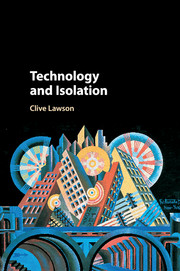Book contents
- Frontmatter
- Dedication
- Contents
- Preface
- Acknowledgements
- 1 Technology Questions
- 2 From Obscurity to Keyword: The Emergence of ‘Technology’
- 3 Ontology and Isolation
- 4 Science and Technology
- 5 The Sociality of Artefacts
- 6 Technological Artefacts
- 7 Technology and the Extension of Human Capabilities
- 8 Technology and Instrumentalisation
- 9 Technology and Autism
- 10 Technology, Recombination and Speed
- 11 Marx, Heidegger and Technological Neutrality
- Bibliography
- Index
6 - Technological Artefacts
Published online by Cambridge University Press: 14 April 2017
- Frontmatter
- Dedication
- Contents
- Preface
- Acknowledgements
- 1 Technology Questions
- 2 From Obscurity to Keyword: The Emergence of ‘Technology’
- 3 Ontology and Isolation
- 4 Science and Technology
- 5 The Sociality of Artefacts
- 6 Technological Artefacts
- 7 Technology and the Extension of Human Capabilities
- 8 Technology and Instrumentalisation
- 9 Technology and Autism
- 10 Technology, Recombination and Speed
- 11 Marx, Heidegger and Technological Neutrality
- Bibliography
- Index
Summary
The previous chapter emphasised the importance of positioning in understanding those features I am referring to as an artefact's sociality. Given this emphasis upon positioning, however, it may seem difficult to distinguish between different kinds of artefacts. If an important part of what an artefact is depends upon how it is positioned and used, distinctions between different kinds of artefacts would seem to reduce to how the relevant communities decide to use such artefacts, or to what such communities agree them to be. In which case, is there any basis for distinguishing technological artefacts or giving an ontological account of technological artefacts that might be different from other kinds of artefacts?
As my definition of technology stands so far, the term ‘technological artefact’ would roughly refer to the results of activities aimed at isolating causal properties of things that can then be recombined and harnessed to extend human capabilities. But such an understanding seems to undermine the importance of positioning developed in the previous chapter, in that being a technological artefact depends upon its history and not just how it is used.
This tension, between the importance of history and current use in determining what kind of thing some artefact is, has a long history in the philosophy of artefacts (an obvious example is the debates concerning the role and importance of proper and system functions) and still dominates the recent literature on the philosophy of artefacts, if often taking on new guises (Margolis and Laurence, 2007). In this chapter I shall again contextualise my position by reviewing prominent literature on this issue, but for the most part I shall focus upon contributions that are rarely considered in this context. Although the basis for distinguishing technological artefacts is not simple or clear-cut, I shall argue that there is much to say, ontologically, about technological artefacts that would seem impossible if being a technological artefact were to depend simply upon how something is used.
- Type
- Chapter
- Information
- Technology and Isolation , pp. 79 - 98Publisher: Cambridge University PressPrint publication year: 2017



